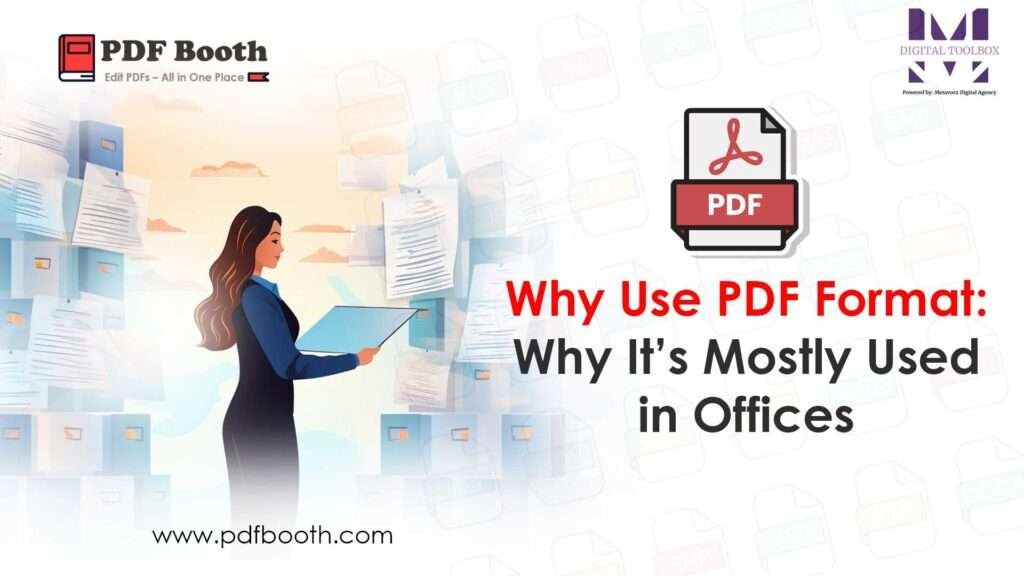Why Use PDF Format: Why It’s Mostly Used in Offices

In the modern workplace, digital documents are essential for communication, record-keeping, and collaboration. Among the various file formats available, PDF (Portable Document Format) has emerged as the most widely used format in offices worldwide. But what makes PDFs so popular, and why do organizations prefer them over other formats like Word or Excel? Let’s explore.
1. Universality and Compatibility
PDF files can be opened on any device, regardless of the operating system, without altering their formatting. Whether you are using Windows, Mac, Linux, or even mobile devices, a PDF will appear exactly as intended. This universality ensures that documents sent between colleagues, clients, and partners retain their original layout, fonts, and images.
2. Maintains Document Integrity
One of the biggest challenges in office communication is ensuring that documents remain unaltered. PDFs preserve the structure and formatting of documents, making them ideal for legal contracts, official reports, and presentations. Unlike Word files, which can be easily edited, PDFs safeguard the content from accidental or unauthorized changes.
3. Supports Security Features
PDFs offer multiple security options, which are crucial in office environments. You can password-protect PDFs, restrict editing, copying, or printing, and even add digital signatures. This ensures sensitive information remains confidential while maintaining accountability in corporate communication.
4. Compact File Size
PDF files can compress high-quality documents into smaller sizes without losing clarity. This feature makes it easier to store and share large files like manuals, brochures, or financial reports via email or cloud platforms, saving both storage space and bandwidth.
5. Professional Appearance
PDFs maintain a clean and professional appearance, which is why businesses often use them for official documentation. From resumes and invoices to marketing materials and company policies, PDFs convey credibility and polish, leaving a lasting impression on clients and stakeholders.
6. Integration with Office Tools
Most office software and business tools support PDF integration. Applications like Microsoft Office, Google Workspace, Adobe Acrobat, and many CRM or project management platforms can create, edit, and view PDFs, making them versatile for various business needs.
7. Easy Digital Signing and Collaboration
In the age of remote work, PDFs facilitate easy collaboration. Tools like Adobe Acrobat allow multiple users to review, comment, and digitally sign documents, streamlining workflow and reducing the need for physical paperwork.
Conclusion
The PDF format is the backbone of office documentation due to its compatibility, security, professionalism, and versatility. Whether for internal communication, client reports, or legal contracts, PDFs ensure your documents are consistent, secure, and accessible, making them the preferred choice for businesses globally.
FAQs:
What is a PDF file?
PDF (Portable Document Format) is a file format developed by Adobe that preserves the layout, fonts, and images of a document across different devices and platforms.
Why are PDFs preferred in offices?
PDFs are widely used because they maintain document integrity, offer security features, are compatible across devices, and provide a professional look for official documents.
Can I edit a PDF file?
Yes, PDFs can be edited using tools like Adobe Acrobat or online PDF editors, but regular PDFs are generally not easily altered, making them more secure for official use.
Are PDFs safe for confidential documents?
Yes, PDFs can be password-protected, encrypted, and restricted from copying or printing, which makes them ideal for sensitive office documents.
